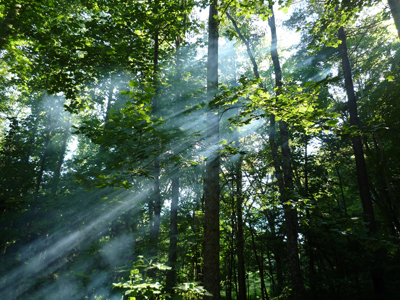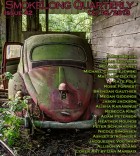Finding and tending the squirrel seems to be such a catalyst for this character. Do you think she changes as a result of the animal?
When I think about her changing I immediately leap to wondering how she ultimately changed—how the experience influenced her post-squirrel life. And then it dawns on me that I don’t think a lot about that sort of thing—the what comes after? I guess, as humans, we change so easily and sometimes without even realizing it—psychologically and physiologically. I don’t know exactly what compelled her to take in and tend to the squirrel (versus walking away assuming its mother would find it, or taking it to a veterinarian) but I think a lot of folks would have made the same choice. One of the tragic things we do, in my opinion, is choose to tackle something doomed from the start and then remain too blind to see it failing until the terrible happens. A scenario where no amount of energy, good/strong will, tending or nurturing in the world can bring about the results we want. I think this is the inherent sadness at the crux of the woman-squirrel relationship. And when we live out that sort of experience—that terribleness—I guess we can only hope to walk away feeling changed for the better, right?
Because the squirrel led to so much introspection in the character, the second person POV seemed like a perfect choice. Was it your original choice?
It was the only choice. So rarely have I written in 2nd person but in this situation it seemed the only way. For the last year I’ve been working on a collection of stories based on animal-people dynamics. They’re all inspired by something historical—an actual animal or a custom, for example. So when I heard a podcast that referenced the 19th century American practice of domesticating squirrels, I knew I needed to know more. Apparently, in those days, how-to pamphlets with instructions for raising a house-friendly squirrel were common. I searched in vain for one of these old pamphlets but when I couldn’t find any, I decided to write one myself.
Your novel was recently released! Can you tell us about it?
Yes, my novel There came out in October through
Emergency Press. It’s a work of biographical fiction, tracing my experiences in Kurdish Northern Iraq between 2006 and 2007. It’s something of a patchwork of stories, images and moments that I took away with me. It’s about many things, like, how we lose ourselves or fail to see ourselves clearly in new places, how new places make us strangers to ourselves, how tricky communication is no matter where you are. The protagonist, an American female journalist, was inspired by some work I did there for an English language Kurdish newspaper. I’m very happy to see it released into the world.
What is the Rotating History Project?
Since 2010 I’ve worked with artist Teddy Johnson (who was kind enough to paint the squirrel that accompanies my story!) on a series of curatorial projects—primarily site-specific exhibitions reflecting on the history/culture of a place. We have something of a call and response formula, where we conceive of a theme, and then invite artists from all walks of life working in diverse mediums to create inspired work. Our last show took place in the former garment district of Baltimore, in a building that once housed a wholesale boot and shoe business. We had everything from documentaries looking at the transformation of the district through the decades, to examinations of immigration through performance art. What I love most about these exhibitions is doing the research, uncovering something that was in some cases right there all along, making connections, and then watching artists make there own connections. To date we’ve done projects in Brooklyn, New York, and Baltimore, Maryland, and we’re currently in production on a show that will take place in Berryville, Virginia, next April and May.
Visit us!



 The core workshop of SmokeLong Fitness is all in writing, so you can take part from anywhere at anytime. We are excited about creating a supportive, consistent and structured environment for flash writers to work on their craft in a community. We are thrilled and proud to say that our workshop participants have won, placed, or been listed in every major flash competition. Community works.
The core workshop of SmokeLong Fitness is all in writing, so you can take part from anywhere at anytime. We are excited about creating a supportive, consistent and structured environment for flash writers to work on their craft in a community. We are thrilled and proud to say that our workshop participants have won, placed, or been listed in every major flash competition. Community works.